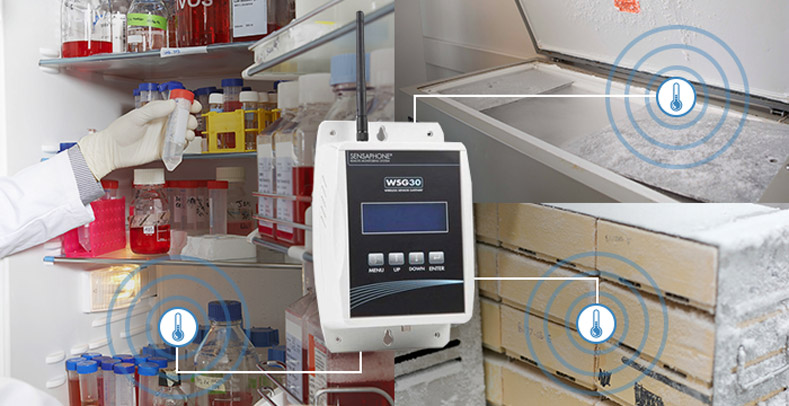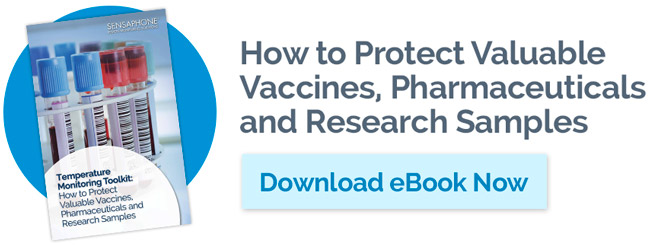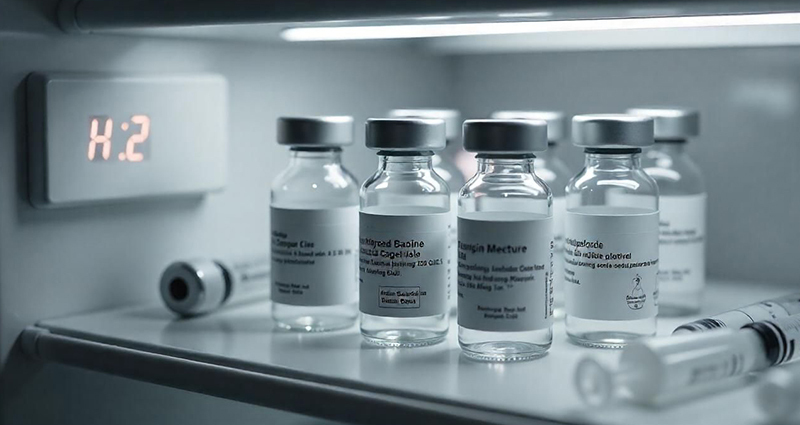
The Sensaphone WSG30 is a flexible wireless monitoring solution. It's useful for applications where it's not viable or cost-effective to hard-wire the sensors, such as medical freezers/refrigerators, data centers and manufacturing plants. The system’s base unit can communicate with as many as 30 wireless sensors. And the sensors can be placed up to 300 feet away from the base unit. However, a successful installation requires some planning to make sure everything works smoothly.
Using Sensors as Routers
One of the first things to consider is if there's anything between the WSG30 and the sensors. If there is a clear line of sight, the sensor will have a strong communication with the base unit. However, if there are thick walls constructed of metal or concrete between the two devices, communication may be insufficient and lead to communication errors and potential false alarms.
If the sensors are unable to communicate with the base unit at the desired distance, you can use any sensors located in between as routers. These "routers" will pass the farther sensor’s data along. Most sensors are portable and function on AA battery power. However, sensors used as routers need an external power adapter. In this case, the sensor’s AA batteries will serve as a backup in the event of a power failure.
Using Sensors as Endpoints
You can also configure WSG30 wireless sensors as endpoints. A sensor configured as an endpoint will simply send its readings back to the WSG30 or a nearby router, and then go into a very low power mode. Endpoints can be battery-powered and operate on batteries for several years. If an endpoint is too far from the WSG30 for direct communication, you must install a router to bridge the gap. Once you reach 7 endpoints, a router is required.
Monitoring Refrigerator or Freezer Temperatures
The WSG30’s wireless temperature sensors are ideal for measuring the temperature inside refrigerators and freezers like those used to store pharmaceuticals, vaccines and other medical supplies. The sensors will communicate temperature readings back to the WSG30 unit. When a sensor detects a temperature outside of the preprogrammed range, it will cause the WSG30 to set off an alarm. The unit can be programmed to send email or text messages to appropriate personnel.
There are several different wireless temperature sensor models available to choose from depending on your application. You will need a model with an external temperature probe to measure the temperature inside a typical commercial or medical refrigerator or freezer. We recommend:
- An ultra-low wireless temperature sensor for applications where the temperature is below -20°C
- A glass bead vial model for applications where the temperature may fluctuate for short periods of time, such as a refrigerator door opening and closing.
Datalogging
The wireless sensors will also communicate temperature readings back to the WSG30 unit, where they can be logged and viewed.To learn more about the WSG30 wireless monitoring system, and to see if it's the right option for your facility.
If you need help deciding on the right wireless monitoring system for your application, our support team can answer your technical questions and make an expert recommendation. Contact us today.








